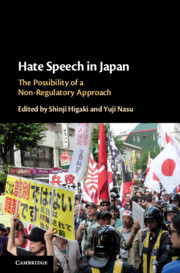Introduction
Published online by Cambridge University Press: 15 January 2021
Summary
Countries around the world are commonly troubled with the problem of hate speech, but their responses vary. Constitutional law scholars often use two models for analysis: the US model, which hesitates to regulate hate speech not directed at particular persons, and the European model, which favours regulation, including of hate speech not directed at particular persons. Most governments regulate hate speech broadly, meaning that the European model has so far held sway, but this simple classification has been under reconsideration recently. On the one hand, the United States strictly regulates hate speech targeting particular individuals and it does so by means of hate crime or harassment laws. It is also said to adopt a rigid distinction between private and public spheres, tolerating a wide variety of private regulation in broadcasting, universities, workplaces, and so on. On the other hand, some European nations are unwilling to execute regulatory laws, thus watering down their effect. The contrast between the US and European models is useful for researchers.
- Type
- Chapter
- Information
- Hate Speech in JapanThe Possibility of a Non-Regulatory Approach, pp. 1 - 14Publisher: Cambridge University PressPrint publication year: 2021



